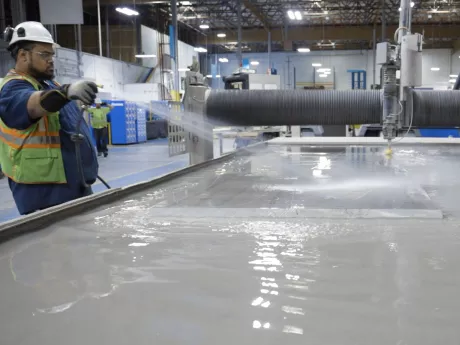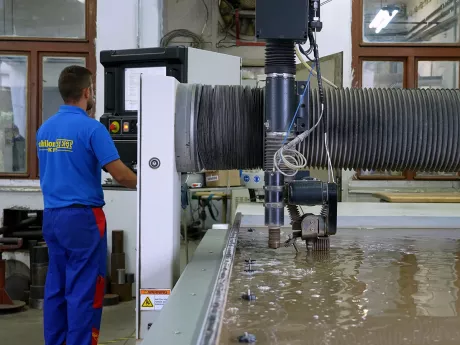Tips & Tricks
How to Choose the OMAX Abrasive Waterjet That's Right for Your Shop
The start of a new year is the perfect time to explore new manufacturing technologies and expand your shop’s capabilities. For many shops, that technology is abrasive waterjet cutting.
Abrasive waterjets offer a fast, flexible, and accurate method for cutting a wide range of materials. As the world’s largest single-source provider of waterjet cutting systems, OMAX designs and manufactures a comprehensive selection of waterjets from which users can choose to suit their specific production needs. To get started, shops looking to incorporate waterjet technology into their operations should consider their production requirements and ask a few key questions to guide their choice.

Here are few questions to ask:
What is the size of the workpiece?
Workpiece size will determine the size of the waterjet’s table. An abrasive waterjet can cut a wide range of material thicknesses (height/ z dimension), but the machine’s table should be able to accommodate the X-Y dimensions of the workpiece material. OMAX waterjet tables range in size from small, 12" x 12" (305mm x 305mm), to very large 26' 8" - 46' 8" x 13' 4" (8.1m - 14.2m x 4m).
What is the anticipated volume and variety of parts to be machined and what part sizes, shapes and contours will be common?
When it comes to volume, single-digit prototyping will require an approach and machine features different than those for longer runs of different or similar parts. Part features will also guide the choice of machine capabilities and accessories, as well as the software required to guide the cutting operations. An abrasive waterjet can cut an extremely wide variety of materials and part thicknesses, and those and other aspects of the parts may dictate other machine options and part-handling equipment.
What environmental factors, such as noise, air pollution and waste are involved?
When cutting is performed under a layer of water, noise is greatly reduced and dust is minimized. No fumes or smoke are generated. Excess water containing fines can be filtered and, depending on local environmental regulations, usually sent to a wastewater drain.
What training will your shop personnel need to operate a waterjet?
Training is critical when adding waterjet cutting to your operations. OMAX provides both self-paced eLearning modules or instructor-led online webinar training to conveniently educate personnel on safe and productive waterjet operation, from loading the software to fixturing and finally cutting the part.
What will a waterjet cost to operate?
While total cost of ownership varies by every shop’s unique production needs, a general operating cost range to run an OMAX waterjet is between $25-35 per hour, not including labor cost. Variables include the cost of abrasive and water, thickness of the material being cut, the edge quality desired, and the number of cutting heads being applied.
Abrasive waterjets offer an affordable and flexible technology to help shops improve their production. And with expert OEMs such as OMAX, shops can integrate this technology with the confidence that they have a reliable partner in the process.

OMAX offers a wide range of abrasive waterjets:
ProtoMAX:
Compact, affordable entry-level units that can cut nearly any material and feature a fully-enclosed 12" x 12" table.
GlobalMAX:
Basic, cost-efficient “Waterjet 101” machines offered with a variety of cutting envelopes and pumps sized to handle jobs from rapid prototyping to full-scale production.
MAXIEM:
“Ala carte” waterjets that enable users to select the table size, cutting envelope, cutting heads, five-axis capabilities, and other options custom-tailored to fulfill a shop’s specific production requirements.
OMAX:
Premium machines that provide aerospace-level accuracies and consistency and include all popular accessories with options for many more.
MicroMAX:
Engineered to be the most precise waterjet system available. With 25" x 25" cutting envelopes, they feature high-precision optical linear encoders, innovative vibration isolation and proven software control systems that enable them to provide positioning accuracy of less than five microns.




